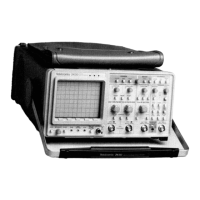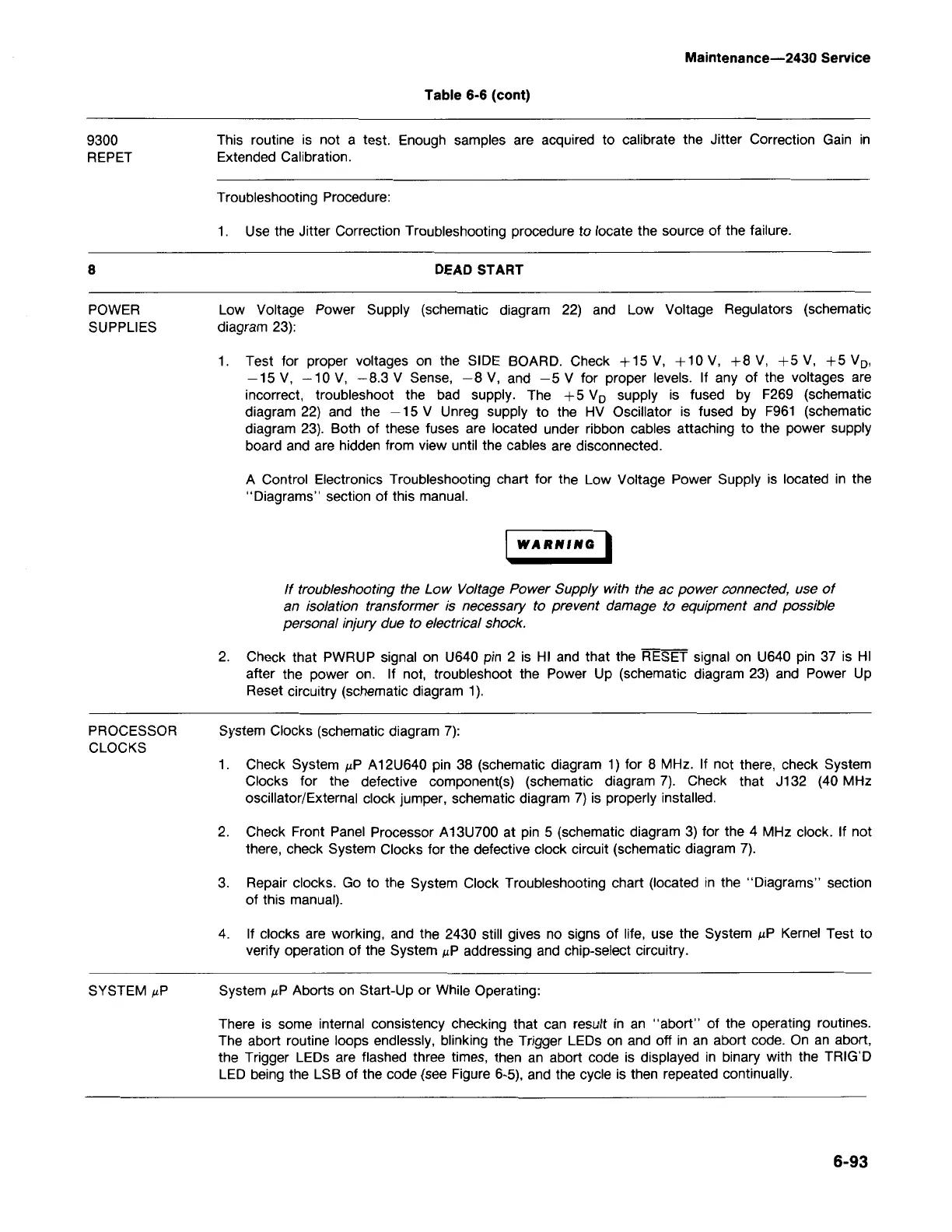6-93
There is some internal consistency checking that can result in an "abort" of the operating routines.
The abort routine loops endlessly, blinking the Trigger LEOs on and off in an abort code. On an abort,
the Trigger LEOs are flashed three times, then an abort code is displayed in binary with the TRIG'D
LED being the LSB of the code (see Figure 6-5), and the cycle is then repeated continually.
System IlP Aborts on Start-Up or While Operating:
SYSTEM IlP
4. If clocks are working, and the 2430 still gives no signs of life, use the System IlP Kernel Test to
verify operation of the System IlP addressing and chip-select circuitry.
3. Repair clocks. Go to the System Clock Troubleshooting chart (located in the "Diagrams" section
of this manual).
2. Check Front Panel Processor A13U700 at pin 5 (schematic diagram 3) for the 4 MHz clock. If not
there, check System Clocks for the defective clock circuit (schematic diagram 7).
1. Check System IlP A12U640 pin 38 (schematic diagram 1) for 8 MHz. If not there, check System
Clocks for the defective component(s) (schematic diagram 7). Check that J132 (40 MHz
oscillator/External clock jumper, schematic diagram 7) is properly installed.
System Clocks (schematic diagram 7):
PROCESSOR
CLOCKS
2. Check that PWRUP signal on U640 pin 2 is HI and that the RESET signal on U640 pin 37 is HI
after the power on. If not, troubleshoot the Power Up (schematic diagram 23) and Power Up
Reset circuitry (schematic diagram 1).
If troubleshooting the Low Voltage Power Supply with the ac power connected, use of
an isolation transformer is necessary to prevent damage to equipment and possible
personal injury due to electrical shock.
WARNING
I
A Control Electronics Troubleshooting chart for the Low Voltage Power Supply is located in the
"Diagrams" section of this manual.
1. Test for proper voltages on the SIDE BOARD. Check +15 V, +10 V, +8 V, +5 V, +5 VD,
-15 V, -10 V, -8.3 V Sense, -8 V, and -5 V for proper levels. If any of the voltages are
incorrect, troubleshoot the bad supply. The +5 VD supply is fused by F269 (schematic
diagram 22) and the -15 V Unreg supply to the HV Oscillator is fused by F961 (schematic
diagram 23). Both of these fuses are located under ribbon cables attaching to the power supply
board and are hidden from view until the cables are disconnected.
Low Voltage Power Supply (schematic diagram 22) and Low Voltage Regulators (schematic
diagram 23):
POWER
SUPPLIES
8 DEADSTART
1. Use the Jitter Correction Troubleshooting procedure to locate the source of the failure.
Troubleshooting Procedure:
This routine is not a test. Enough samples are acquired to calibrate the Jitter Correction Gain in
Extended Calibration.
9300
REPET
Table
6-6
(cont)
Maintenance-2430 Service

